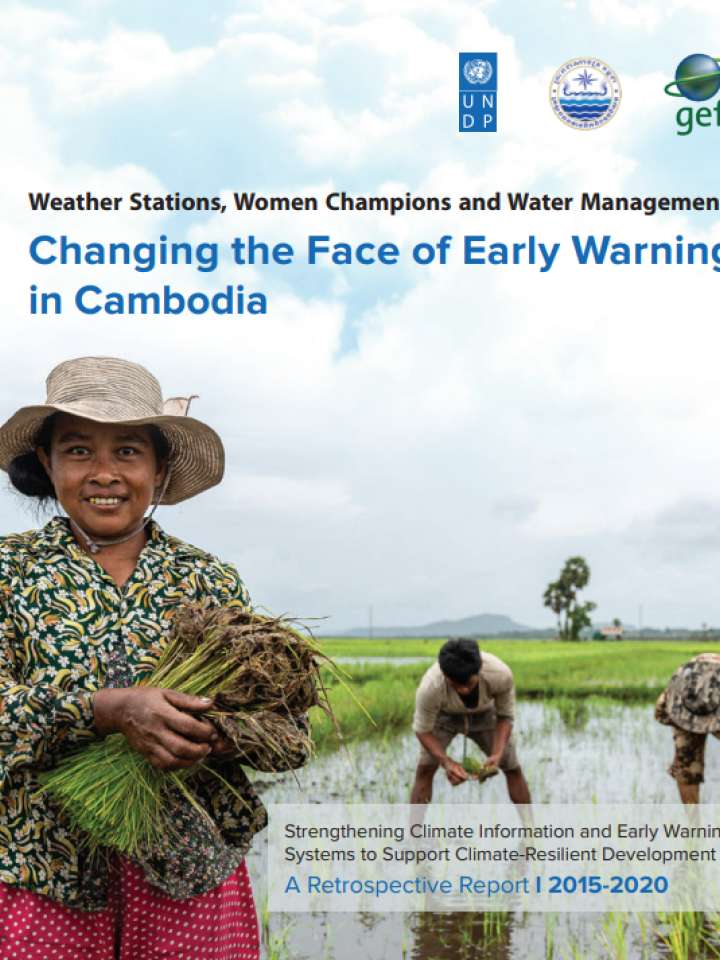Weather stations, women champions and water management: Changing the face of early warning in Cambodia
The Royal Government of Cambodia is building a comprehensive digital solution for climate change adaptation to respond to increasing disasters due to climate change by accurately forecasting and modeling weather. Cambodia’s new face of early warning relies on robust enabling policies and digital solutions to adapt to climate change and to ensure climate-resilient development in the years to come.
The digital solution is based on real-time online data that can be used to detect adverse trends and to prepare for extreme weather events. Under the leadership of the Ministry of Water Resources and Meteorology (MOWRAM), and with support from the Global Environment Facility and the United Nations Development Programme (UNDP), this digital system has been established and extended across all provinces in Cambodia.
Find here some of the early achievements of the project:
- Working closely with local authorities and communities, 53 automatic hydrology and weather stations were installed to digitize the collection of climate data, including rainfall, water levels and temperatures, and to enhance capacity for early warning. Real-time data from these automatic stations is now centralized in an online Integrated Water Management System.
- In order to alert communities to disasters that may affect them, the early warning phone service EWS1294 was extended to 24,628 new subscribers in UNDP-supported provinces. The system has now been successfully rolled out nationwide to bolster disaster preparedness.
- Provincial coordination mechanisms for drought management were set up through the establishment of Drought Infohubs in eight provinces. These hubs support provincial authorities to predict droughts and to coordinate early response and mitigation to reduce losses, which will help almost 6 million people who live in these areas
These initiatives are sustained by the strong involvement of local authorities and communities, including the elevation of women’s roles in climate action, and by the development of key enabling policies. Among these, the Standard Operating Procedures for MultiHazard Early Warning Systems were developed to cover all types of disasters and to strengthen policy and institutional arrangements at national, district and community levels.
Explore further
